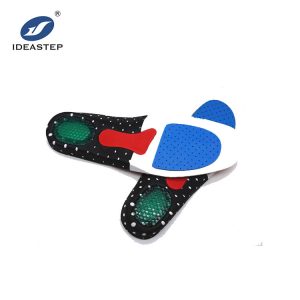HOW TO KEEP YOUR FEET HEALTHY AT WORK
Every day, our feet do the grunt job of supporting our entire bodies. From infancy to adulthood, they transport us from place to place, travelling upwards of 100,000 miles in our lives (Moonwalkers.com). Depending on the type of work you do, the average number of steps you take during a typical work day can range from 6,600 to 22,800. A typical office worker takes 7,500 steps per day, whereas a server or waitress takes approximately 23,000 steps per day. Nurses, retail workers, farmers, teachers, and tradespeople all walk more than 10,000 steps every day, demonstrating the importance of keeping our feet healthy (Healthline.com-Average Steps by Occupation). Our feet are the foundation of our bodies, but they are frequently overlooked until a problem arises. Once an issue arises, it has the potential to impair our entire body’s general health. Why don’t we take care of our feet before any problems arise, given how hard they work for us? Let’s look at some ways we may take care of our feet and keep them healthy as we go about our daily lives.
Take the Time to Look at Your Shoes
Your body will suffer if you wear shoes with little to no arch support. A properly supporting shoe not only provides a stable base and balance, but it also contributes to your total level of activity. Standing and walking puts the most tension on your arch. You may feel back discomfort, foot pain, headaches, or stomach problems if you don’t have enough support.
Your shoes must not only meet the needs of your job, but also your unique biomechanics of your feet and motion. Understanding your foot mechanics’ requirements first will help you choose footwear that is appropriate for both your feet and your job.
It is critical to maintain correct arch support and general foot comfort if you work in a job that demands you to be on your feet for the most of the day, such as construction, delivery, beautician, or manufacturing shop floor. Without sufficient arch support, you could end up with poor balance in your lower extremities, resulting in lower back pain as well as tired and weary legs and feet (Canadian Centre for Occupational Health and Safety).
It might be difficult to select appropriate footwear when working at a desk, even in a business situation. Moccasins and slip-on shoes offer the least degree of support. Choose a shoe with several eyelets if you can wear laces at work. The more a shoe possesses, the better it can adjust to your foot’s structure and provide the finest support.
Consider Using the Footwear’s Little Assistant (shoe inserts)
Your feet’s mechanics may necessitate the use of additional support. Depending on your needs, this could be in the shape of over-the-counter arch supports or bespoke foot orthotics. Investing in a good shoe insert is essential for making even the least supportive shoes healthier for your feet.
If you stand for more over 5 hours a day at work, orthotic insoles should be considered (Commercial Construction Mag). Standing for that long puts more strain on your feet and increases your chances of developing plantar fasciitis. Plantar fasciitis is a plantar fascia condition caused by overuse. The plantar fascia is a broad ligament that runs from your heel to the base of your toes on the bottom of your foot.
Compression Socks: Their Benefits
Blood pools in your feet and ankles when you stand for long periods of time. They swell and become unpleasant as a result of this. Compression socks are intended to assist in the circulation of blood by pushing it up the legs, into the heart, and back into circulation. This aids in the efficient circulation of blood in your feet and legs.
Changing your shoes is a good idea.
Our shoes lose their ability to absorb stress as quickly as they did when they were new over time. This implies that the extra shock that our new shoes used to supply must now be absorbed by our feet and joints.
Avoid wearing the same pair of shoes to work every day if at all possible. You may improve the amount of cushioning recovery in the midsoles of your shoes and extend their overall lifespan by rotating footwear every day.
Stretching Should Be Done Throughout The Day
Throughout the day, use a massage ball to practice foot and leg stretches. They’re wonderful for massaging the tissue in your feet all day, which can aid with weariness and circulation (Natural Footgear).
Simply roll the ball back and forth under your feet along the arches. This will assist in releasing muscle and fascia tension. You can stretch your feet and calves during your coffee and lunch breaks.
Moisturize
There are numerous lotions and creams that claim to be the greatest for your foot. It doesn’t matter which one you choose. The key to hydrating your feet is to make sure you exfoliate them first. Remove any dead skin cells to ensure that your dry feet are ready to absorb fresh moisture.
After bathing your feet, use a washcloth to dry them off, or a loofah or pumice stone to remove calluses. Adding Epsom salt to your bath will soften your feet’s skin, making it simpler to remove any dead skin.
To seal in moisture, apply a lotion or petroleum jelly after exfoliating. Above everything, maintain consistency. Your feet require hydration on a regular basis. Drink plenty of water and consume a diet high in Omega fatty acids to keep your body moisturized from the inside out.

